Posts Tagged: insects
Lawn-pocalypse! Surviving Drought
Ah, summer! The season of sunburns, pool parties, and… lawn droughts. If your once lush, green carpet now looks like a crunchy brown doormat, you're not alone. Let's dive into why your yard is staging a dramatic death scene and what you can do to...

Bermuda grass and weeds overtaking drought stressed turf grass.
Our Buddies in the Garden
When you venture into your pollinator garden, look for the beauty, color, diversity and the intensity that surrounds you. You will be astounded. A honey bee nectaring on lavender in a soft-pastel scenario. A katydid nymph crawling (backlit) on a...

A honey bee nectars on lavender in a Vacaville garden. The soft pastel colors almost resemble a painting. (Photo by Kathy Keatley Garvey)

A katydid nymph crawls on a blanketflower, Gaillaria. (Photo by Kathy Keatley Garvey)

A Gulf Fritillary butterfly, Agraulis vanillae, nectaring on lantana. (Photo by Kathy Keatley Garvey)

A praying mantis, Stagmomantis limbata, perched on a Cosmo and looking for prey. (Photo by Kathy Keatley Garvey)

Goodbye! A yellow-faced bumble bee, Bombus vosnesenskii, exits a lavender patch. (Photo by Kathy Keatley Garvey)
Introduce Your Children to Insects
How can you interest your children in insects? "For me, at least a lot of my interest developed when my parents gave me a net and a butterfly picture book and then gave me enough independence to explore on my own," recalls UC Davis distinguished...
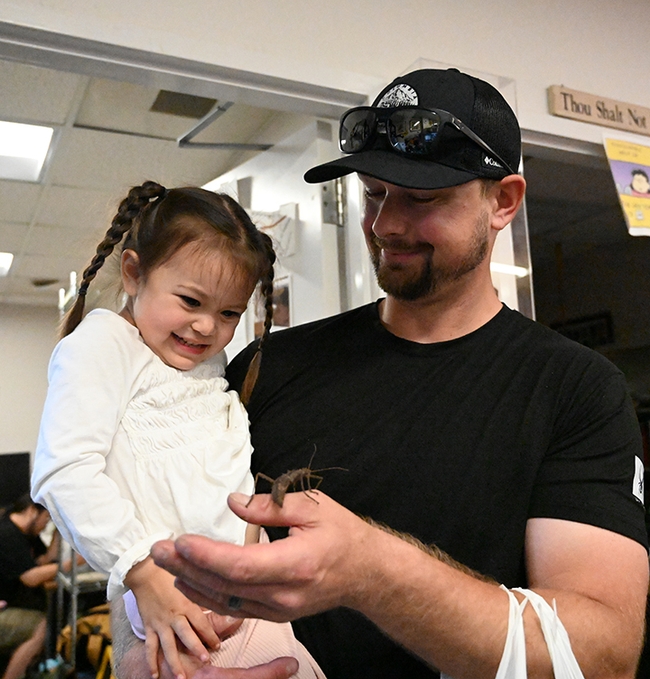
Three-year-old Everly Puckett checks out a stick insect held by her father, Ryan Puckett, a UC Davis employee. (Photo by Kathy Keatley Garvey)
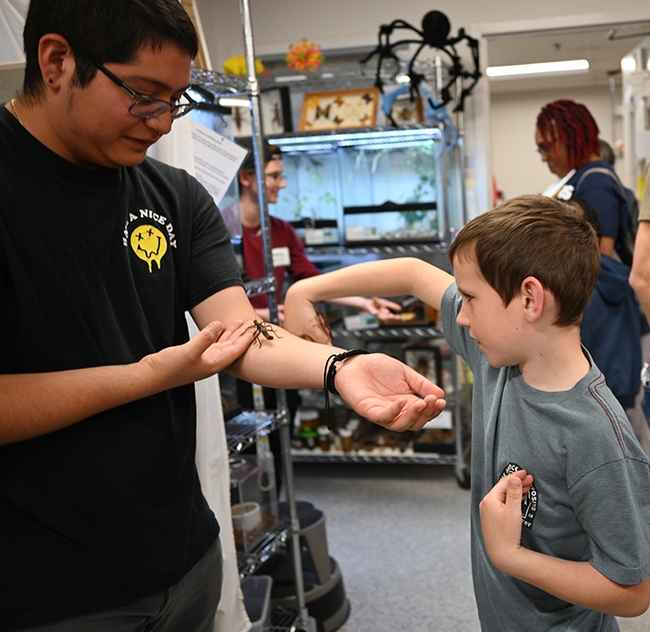
UC Davis animal biology major Jakob Lopez shows a stick insect to Hunter Baker, 8. (Photo by Kathy Keatley Garvey)
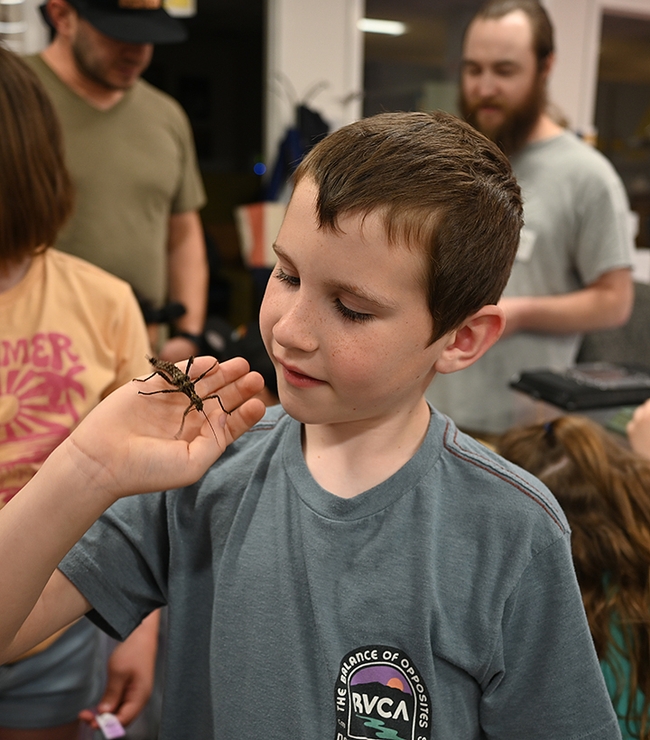
Hunter Baker, 8, delights in holding a stick insect. In back is Bohart collections manager Brennen Dyer. (Photo by Kathy Keatley Garvey)
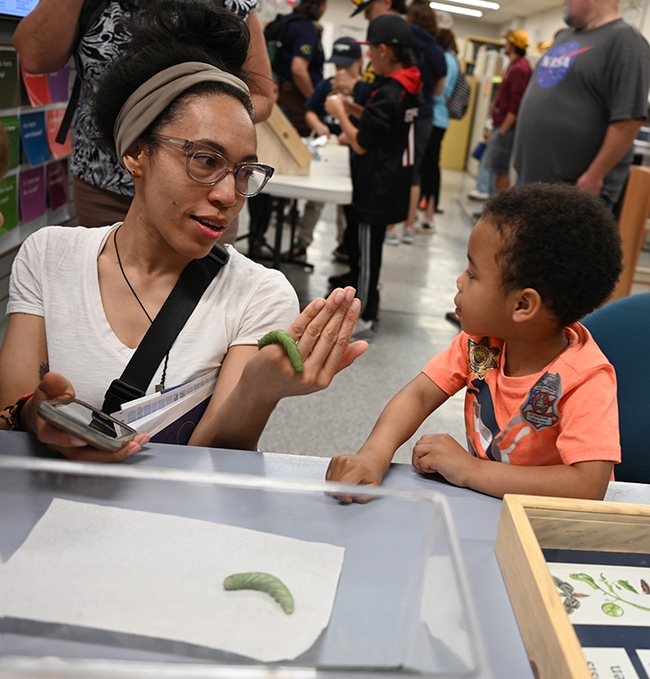
Danielle Hoskey introduces her 4-year-old son, Atlas Scott to a tomato hornworm. (Photo by Kathy Keatley Garvey)
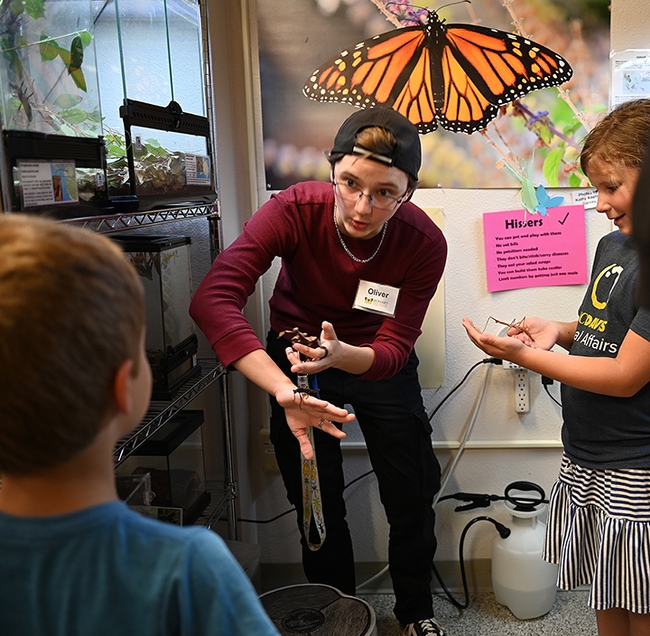
UC Davis entomology major Oliver Smith eagerly shows a stick insect to a youngster. (Photo by Kathy Keatley Garvey)
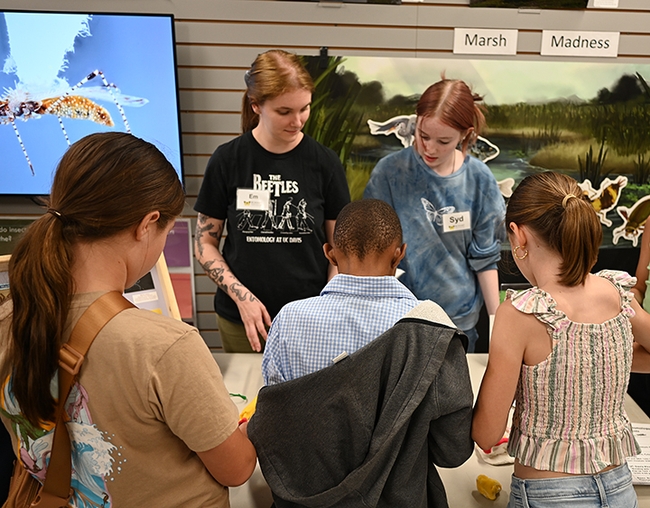
UC Davis entomology doctoral student Emma "Em" Jochim (left) and high school intern Syd Benson engage the youngsters. (Photo by Kathy Keatley Garvey)
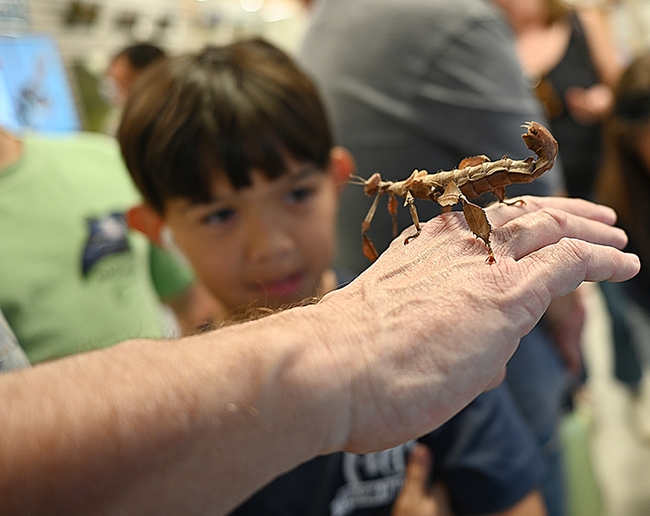
Mark Blankenship, 10, peers at a thorny stick insect. (Photo by Kathy Keatley Garvey)
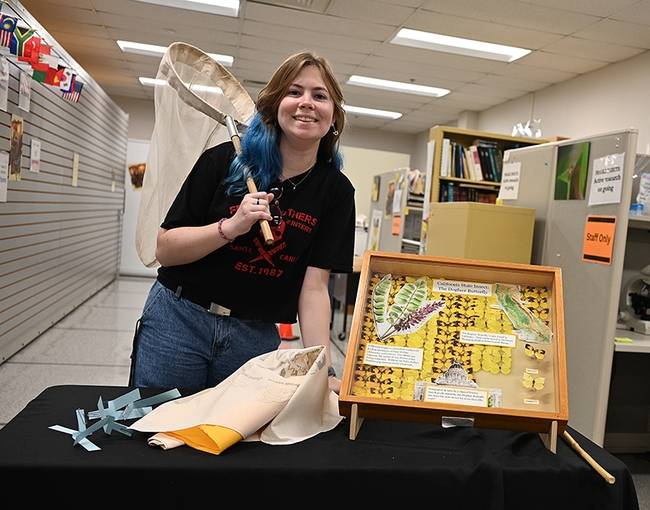
UC Davis psychology major Naomi Lila, a member of the UC Davis Entomology Club, awaits visitors. (Photo by Kathy Keatley Garvey)

Sebastian Carrasco, 3, waves "bye bye" to a stick insect. He decided he didn't want to hold it. (Photo by Kathy Keatley Garvey)
Earwigs in Art, Literature, and Your Garden
Earwigs are one of the most common pests in our gardens. There is a lot to learn about them besides knowing how to prevent the damage they cause.
Fun facts about earwigs:
- Their name probably comes from myths surrounding these insects:
- They sometimes enter peoples' ears when they are sleeping and they sometimes burrow into the brain
- The forceps appendages at their rear ends look like tools to puncture ears for earrings
- The expanded wings of earwigs have the shape of human ears
- The common and abundant earwigs in our gardens weren't even in California 100 years ago.
- Roald Dahl, author of children's books, has a character in George's Marvelous Medicine that urges the grandson to eat a ‘big fat earwig' and tells him how to do it so it wouldn't grab his tongue with the ‘sharp nippers on its back end.
- Roald Dahl also mentions earwigs in James and the Giant Peach where the characters find an earwig inside the giant peach.
- Under their hard, shiny wing covers, they have remarkably large and complex flight wings that spring from folded to flight without muscles. (These wings expand to 10 times larger than when folded.)
- Female earwigs watch over their eggs and newly hatched young, protecting them and keeping them clean until they are old enough to fend for themselves.
Did you know?
- Earwigs are important predators of aphids, mites, nematodes, and other small insects and their eggs.
- Research from Washington State University shows earwigs can be beneficial in apple and pear trees, eating pests but doing minimal damage to the crop.
- They also feed on fungi and decaying plant material.
- They are food for other animals, including birds and lizards.
Tips to control earwigs in your garden:
- Remove their hiding places. Earwigs thrive in dark and moist areas during the day, coming out to feed at night.
- Clean up debris, leaf piles, and decaying plant matter
- Trap them by placing numerous traps throughout your yard.
- Use empty tuna or cat food cans with ½ inch of vegetable oil and a smelly substance such as fish oil or bacon grease. Place these in your garden bed with the top of the can level with the soil. In the morning, dispose of the trapped earwigs.
- Roll up damp newspaper, secure with rubber bands, and place in your garden bed. Next morning, collect them and shake the earwigs into a pail of soapy water.
- Baits such as SluggoPlus can be used, but often they are not effective if the earwigs have other attractive food sources like your tasty garden.
For more information about earwigs, please visit these links:
https://ipm.ucanr.edu/PMG/PESTNOTES/pn74102.html
Ode to an Earwig https://ucanr.edu/blogs/blogcore/postdetail.cfm?postnum=51351
Earwigs in California (published 1975): https://essig.berkeley.edu/documents/cis/cis20.pdf
Washington State University study: https://www.mdpi.com/2075-4450/14/12/906
Help Desk of the UC Master Gardeners of Contra Costa County (SEH)
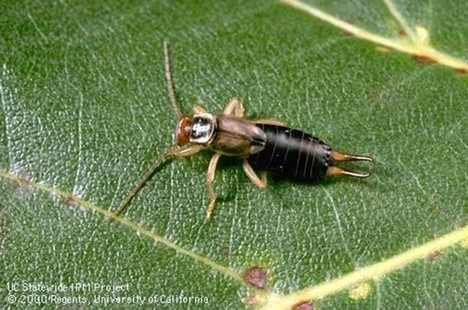
Adult european earwig
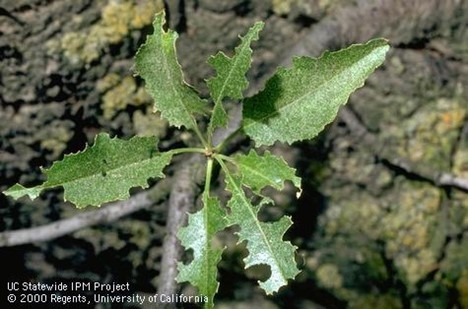
Typical earwig damage
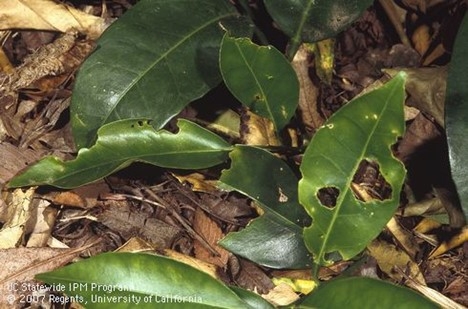
Earwig damage to orange tree leaves
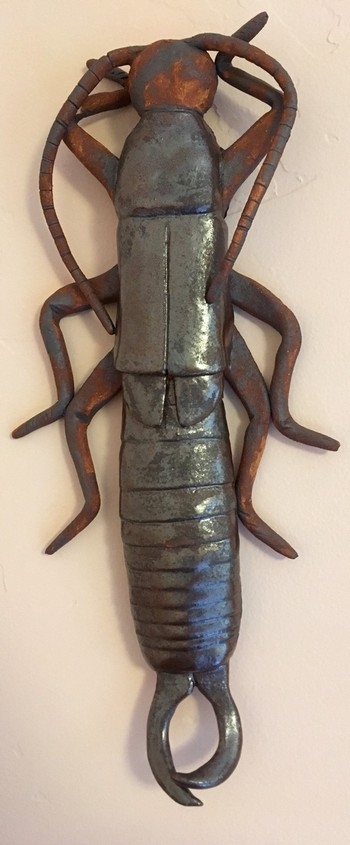
Earwig ceramic sculpture, S. Heckly
Best Friends in the Garden—Companion Planting
Companion planting combines diverse plants in an informed manner to bring a balanced ecosystem into the garden. This approach to gardening has been used by organic gardeners for decades. The idea is to plant herbs and flowers with vegetables...
